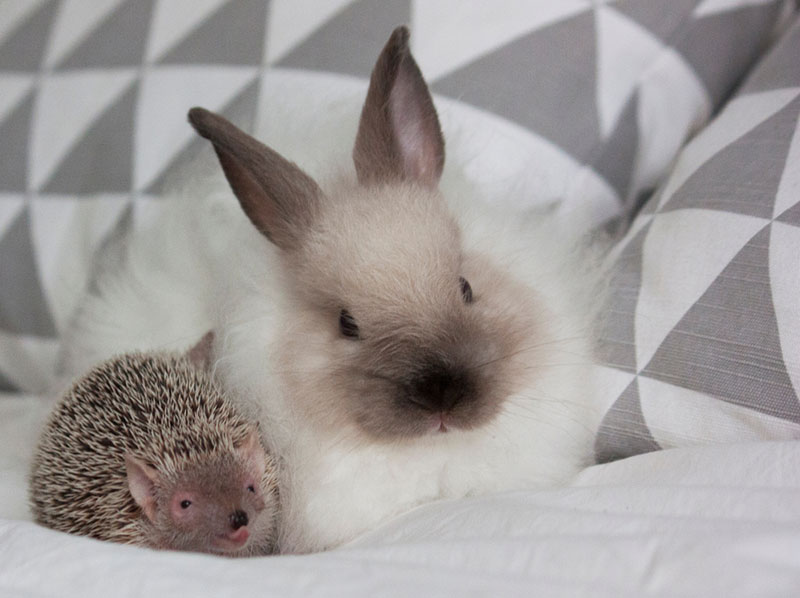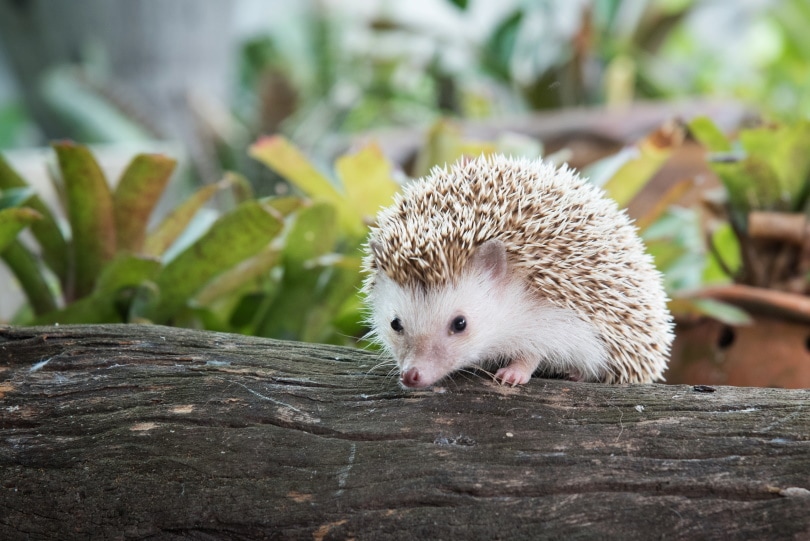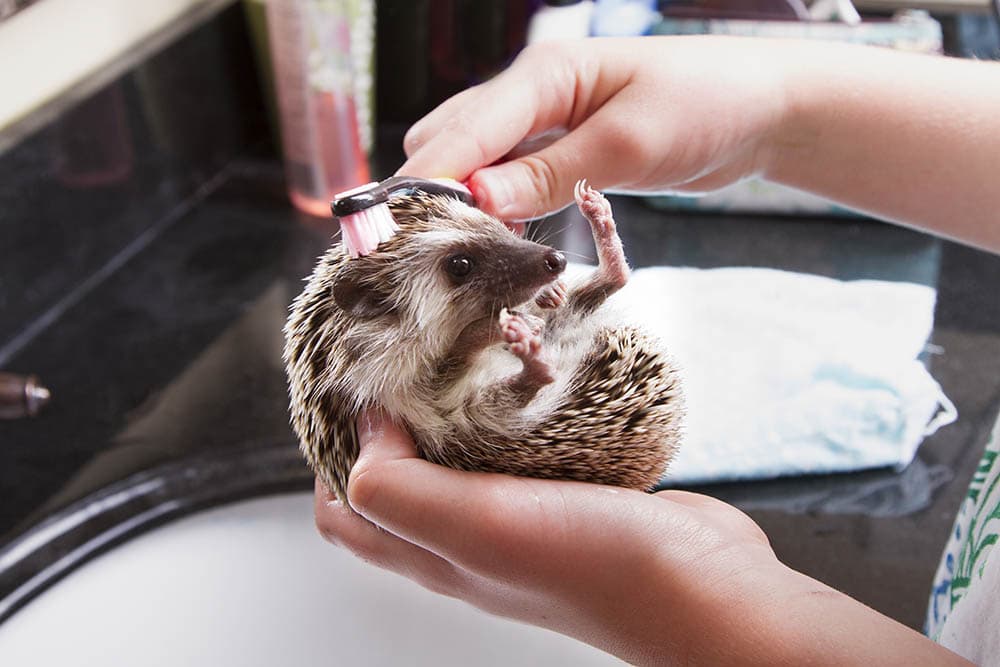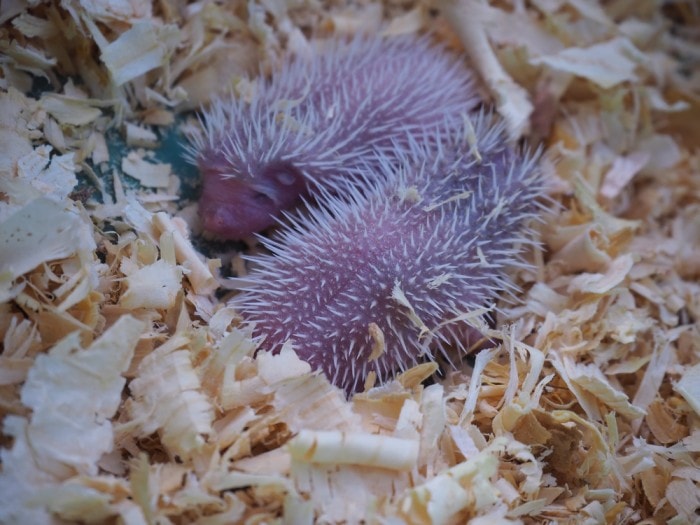
As strange as this behavior is in the eyes of humans, filial cannibalism, the act of eating one’s offspring, is a commonly observed behavior in many species in the animal kingdom. It’s easy to wonder what causes animals to behave in this disturbing manner. Hedgehogs are no exception to this and have been known to eat their own young.
While it is difficult to prove definitively just why some hedgehogs choose to eat their hoglets, there are a few reasons why a mother hedgehog may resort to consuming her young. We’ll take a look at those below.
5 Common Reasons Why Hedgehogs Will Eat Their Young
1. Malnourishmen
Hedgehogs are mammals, and when a mammalian gives birth, she will immediately begin nursing her offspring. A mother’s nutrient and energy requirements increase drastically after delivery and the mother hedgehog can only successfully feed her young if she is well-nourished and in good health herself. If the mother is malnourished and in need of sustenance, she may resort to consuming her offspring to provide herself with the needed nourishment.
2. Stress
Mother hedgehogs can become stressed very easily. Many keepers warn that if the female becomes too stressed after delivery, there is an elevated risk that she will eat her babies. This stress response has been observed in both wild and captive hedgehogs and is believed to be a survival mechanism that allows her to benefit from consuming her young rather than a predator.
It is highly recommended that breeders provide the pregnant female hedgehog with a quiet place and lots of material to create a comfortable nest. Veterinarians have advised that it’s best to keep your female hedgehog separate from both humans and other hedgehogs approximately one week before delivery and maintain that distance for at least 10 days after birth.
This will allow the mother quality time to nurse and care for her young with the least amount of stress possible. You will want to ensure you provide her with enough food and fresh water to keep her well-nourished and hydrated and she cares for her new offspring.
3. Sickness, Deformities, or Weakness in Hoglet
If a hedgehog has given birth to any hoglets that appear sick, deformed, or are notably weaker than the others, the mother may resort to eating those individuals or rejecting them by pushing them out of the nest. Many keepers have noted that it’s not unusual that only two to three babies are reared successfully.
This particular behavior has been observed among many species. The mother tends to either abandon or consume the weakest offspring to care for those that have a higher chance of survival.
4. A Male Presence
Male hedgehogs are unable to recognize their own offspring and have been known to eat hoglets if they are given access to the litter. Not only are hedgehogs omnivores that will eat meat sources, consuming a female’s offspring will make her receptive to breeding much sooner.
In addition, mother hedgehogs have been observed eating their young when a male hedgehog is present out of a stress response. Hedgehogs are very solitary animals that should be housed alone except for breeding purposes. After the breeding has commenced, there is no need to keep the male and female housed together.
5. The Mother’s Age
The age of a mother hedgehog can play a role in the likelihood of whether she will eat her young. If a female has been bred too young, you run the risk of the immature mother lacking motherly instinct and consuming her babies.
Veterinarians recommended not to breed a female hedgehog before 6 months of age to allow her time to fully grow and mature. In addition, it is said that breeding a female for the first time after 12 months of age should also be avoided, as this increases the likelihood that the pelvic bones have fused together, making the birthing process much more difficult and potentially dangerous.
Hedgehogs have a 4 to 7-year lifespan and keepers should also avoid breeding females that are older than 2 years of age, as they are coming up on menopause and their reproductive life is coming to an end.
Preventing a Mother Hedgehog from Eating Her Young
For hedgehog keepers that plan on breeding, there are a few things that can be done to help create an ideal environment for the mother hedgehog to try and prevent her from eating her little ones.
Make Sure Your Hedgehogs Are Healthy
First and foremost, your hedgehogs need to be healthy and well-nourished. Even for those that do not plan on breeding their hedgehogs, proper care and husbandry are vital for the overall well-being of your pet hedgehog. These spiky little creatures can pose a bit of a challenge as pets, so it’s best to do your research on the ins and outs of proper hedgehog care and husbandry.
You need to ensure you feed your hedgehog a well-balanced diet. It’s best to speak with your veterinarian if you have any questions or concerns about your hedgehogs’ dietary needs. A pregnant female will have different dietary requirements than before pregnancy, you need to ensure she is well-nourished so that she can care for her young.
But your pet’s health is not just limited to diet. Hedgehogs need to be provided with proper exercise equipment for mental stimulation and be housed in a safe and secure environment in a lower-traffic area of the home.
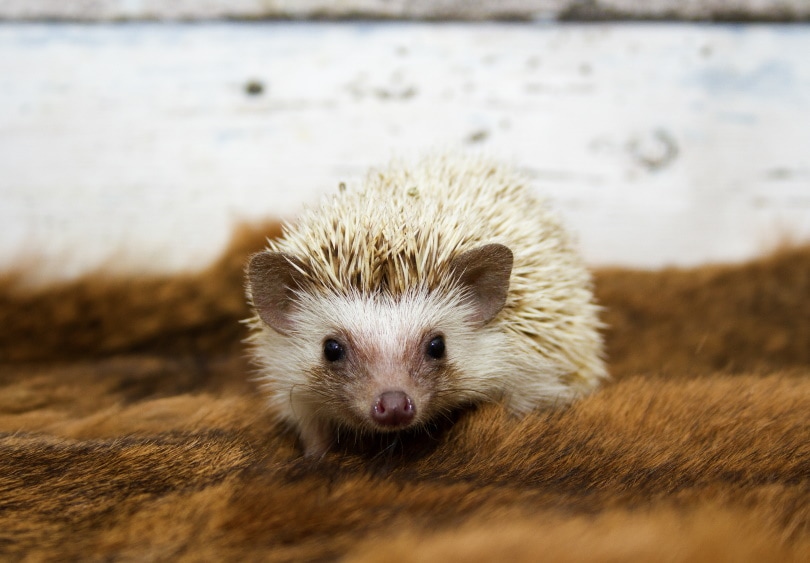
Create a Stress-Free Environment for Mom
As mentioned previously, it’s best to create a stress-free and comfortable environment for the mother hedgehog to give birth and raise her young. The mother will be on high alert after she gives birth and even small stressors can affect her mental state.
At least one week before she gives birth, ensure her cage is placed in a very quiet area of the home that is free from regular traffic and household noises. Not only does she need to be provided with proper nesting materials, food, and freshwater, but she will need to be left alone with her young for at least 10 days after birth to avoid causing her undue stress that could result in the consumption of the babies.
Keep People and Other Pets Away
Make sure everyone in the household, including children, are aware of the mother hedgehog’s needs during this time. It’s very tempting to want to sit in and observe her with her brand-new babies, but it could have devastating results. There will be plenty of time to interact with the hoglets once they age.
Any other household pets should be kept away from the mother and her hoglets. It’s a good idea to keep the door shut to prevent the free-roaming pets such as cats or dogs from wandering into her space. There should also be no other caged animals housed in the same room as the mother as she raises her young.

Use Only Ethical Breeding Practices
Keepers should always use ethical breeding practices and ensure the male and female are of proper breeding age before allowing them to mate. Female hedgehogs can become fertile as early as 8 weeks of age but should not be bred before turning 6 months old. Males can breed at any age, but it is best to wait until they are at least 6 months of age before allowing them to do so.
A female hedgehog should not be bred more than 3 times per year and will need a recovery period of several months before being bred again. Overbreeding a hedgehog will not only exhaust them and deplete their energy and nutrients, but it will also cause a great deal of stress, which could lead the mom to eat her young.
You should only breed hedgehogs with friendly temperaments that are overall docile and easy to handle. This goes for both males and females. The breeding pair should not be closely related, and both should be healthy, at an ideal weight with no known ailments.
Consult Your Exotic Animal Veterinarian
If you have any concerns or questions about breeding hedgehogs and ensuring you are properly caring for the mom during this time, reach out to your exotic animal veterinarian. Your veterinarian will be able to guide you on proper diet, husbandry, and health care throughout the life of your hedgehogs.
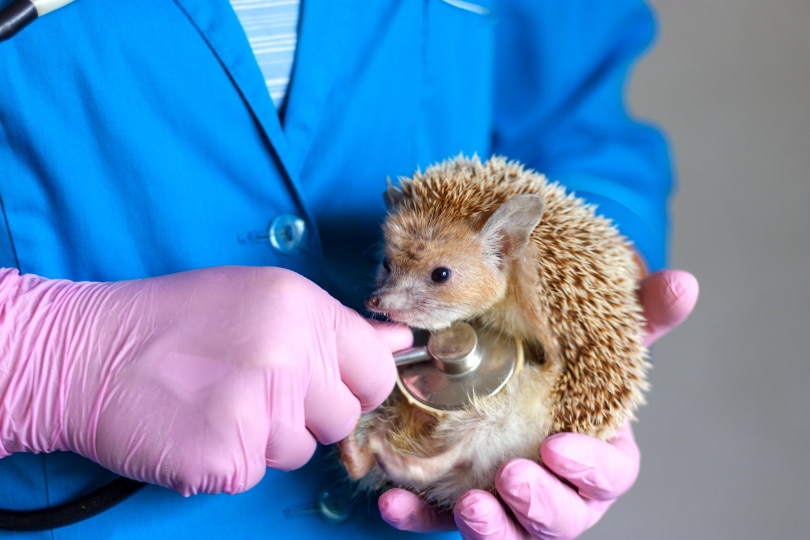
What If the Mother Hedgehog Eats Her Young?
If you have done everything and your female hedgehog still resorts to eating her hoglets, there is not much that can be done. Even if she has consumed some of her young, you need to do your best to ensure her environment remains stress-free to help increase the chances of survival for the remaining hoglets.
If a female hedgehog has had more than one litter where she has eaten her young, it’s best to stop using her for breeding, as it’s likely she is not taking well to motherhood and is not an ideal candidate.
Final Thoughts
Hedgehogs may resort to eating their young for a few reasons. This behavior is observed in both wild and captive hedgehogs and is typically the result of extreme stress on the mother. For hedgehog keepers, it’s best to ensure all factors are in place for mom to have a quiet and stress-free space to deliver and raise her young.
Featured Image Credit: hanisnan Sukprasert, Shutterstock


